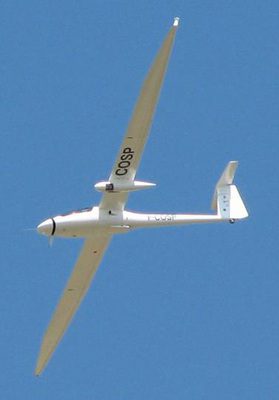
A campaign to study Ka-band radar for Earth observation is being organized and funded by the European Space Agency and carried out by the French national aerospace research centre Onera in southern France. Here a Busard motor-glider is carrying the Ka-band synthetic aperture radar under its left wing.
A field experiment has researchers excited about the potential of Ka-band, a new short radar wavelength”only 8.5 mm”to image Earth from space.
Because it can offer both very high-resolution images and precise measurements of surface height at the same time from one satellite, scientists and engineers believe it could be suitable for a wide range of environmental applications”from measuring ocean currents across the globe to monitoring changes in mountain glaciers.
However, as with any new technology, there are challenges to overcome if a Ka-band imaging radar is ever going to orbit Earth. Unlike current and near-future radar satellites, which operate using wavelengths of 3“24 cm, shorter-wavelength sensors are much less established, so a lot of research and development are required.
An additional complication is the fact that Ka-band sensors also operate at the very edge of the atmospheric window that allows radar sensors to see through the atmosphere and gather information about Earth's surface. Any shorter than 8.5 mm, and the images wouldn't be able to see the ground.
Image courtesy of Onera.

